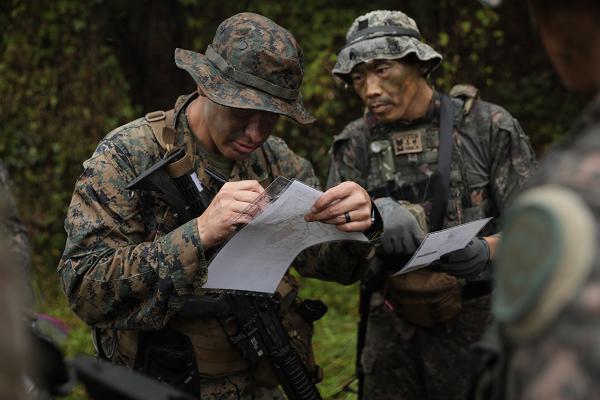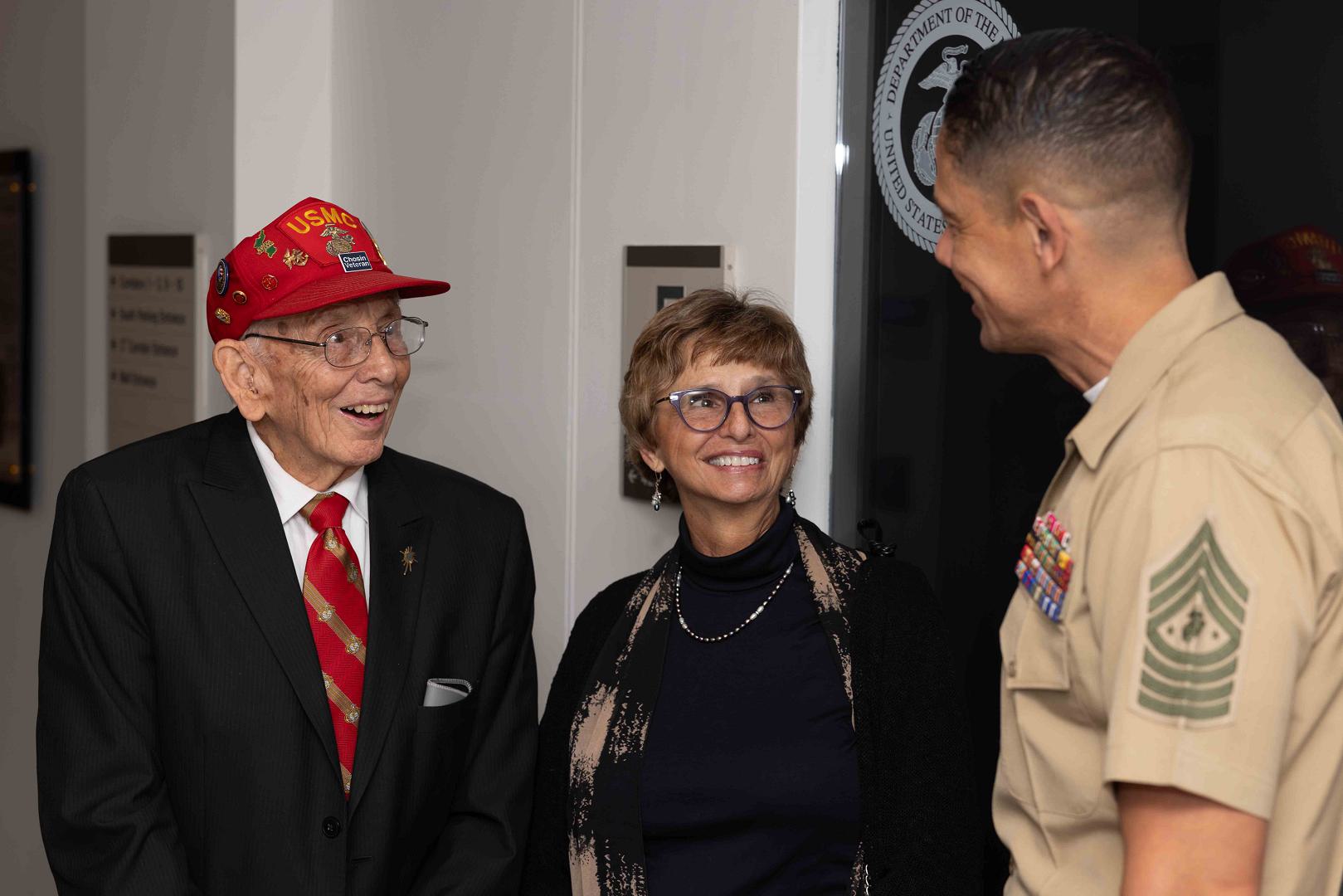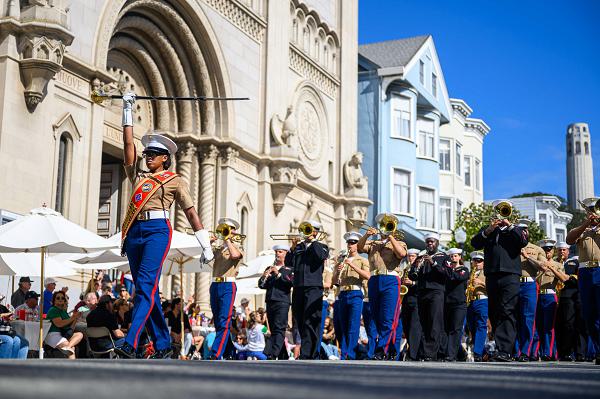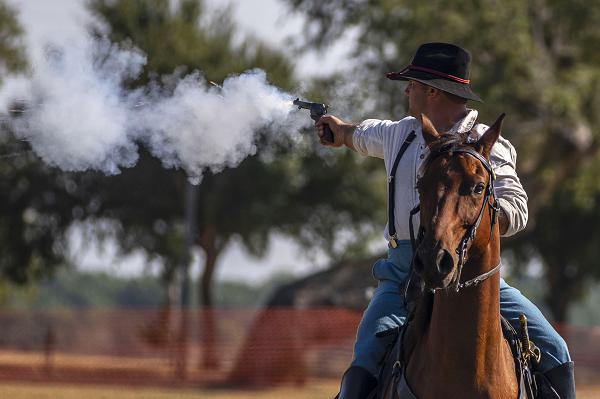- Details
- Hits: 963

Camp Humphreys, Republic of Korea. (November 5, 2024): In this modern age, our military uses satellites, cell phones, and global positioning systems to find its way around. But what happens when the power goes out, the satellites are gone, and there is no “signal” to be had? In this photo by Staff Sergeant Ian Vega-Cerez, Korean and American Senior Enlisted Leaders plot grid coordinates during the land navigation portion of Mangudai 2024, an annual training event considered one of the toughest in South Korea.
Mangudai exercises reinforce mastery of core Soldiering tasks including live fires, patrol base activities, rendering casualty care under threat of mortar fire, a hand-to-hand combat challenge in a waist deep mud-pit, and miles upon miles of foot-marching through rain and the frigid cold.
But of all the skills put to the test at Mangudai, land navigation stands out because of its demand for accuracy, endurance, and leadership under extreme conditions. While our armed forces certainly take full advantage of today’s navigational technology, a simple and reliable compass-based system is still taught at infantry school.
Before the invention of the magnetic compass, the ancients relied on the sighting of landmarks, the position of celestial bodies, and even the flight path of birds to help guide their way. It was not until the Chinese Han Dynasty in 206 BC that a common fortune telling device was found to be useful as an aid to navigation.
- Details
- Hits: 1527

Arlington, Virginia. (November 8, 2024): As America celebrates Veteran’s Day, the Marines celebrated their 235th Anniversary by honoring a member of the “Chosin Few.” In this photo by Sergeant James Stanfield, Marine Corps PFC Rudy Meekins, a veteran of the Korean War, meets with the 20th Sergeant Major of the Marine Corps Sergeant Major Carlos A. Ruiz at the Pentagon. Meekins was a member of 3rd Battalion, 11th Marines, who landed at Inchon, earned four Purple Hearts, and fought in the Battle of the Chosin Reservoir.
During World War II, the 11th Marines fought in Eastern New Guinea and the Battles of Peleliu, Guadalcanal, and Okinawa. Dispatched to Korea in 1950, the 11th took part in the famous Inchon landings that sent the communists fleeing north in defeat. As the brutal Korean winter set in, the 11th was ordered to seize and occupy the Chosin Reservoir, a desolate outpost connected to the coast by a single lane highway.
During the last week of November, the Chinese attacked with twelve divisions in three armies (numbering 150,000 soldiers—mostly infantry with mortars and machine guns) that threatened to encircle and destroy the Marines. What followed will live in Marine Corps history as the 11th conducted a fighting retrograde back down the single highway, through several mountain passes, until they reached transport ships at the coast.
- Details
- Hits: 1169

Veteran’s Day brings mixed emotions for many former servicepeople.
On the one hand, it is a day dedicated in their honor, a nation’s way of saying thank you. On the other, it jogs memories that are best left forgotten. There are currently 15.8 million veterans today, many of them members of the greatest generation that are fading into history (In 2024, there are an estimated 66,000 of these veterans alive).
For those who missed the chance to serve, this day is your opportunity to express gratitude for the sacrifices these vets made for us. If you encounter a veteran this week, ask them how they are doing and say thanks.
- Details
- Hits: 2628

San Francisco, California. (November 1, 2024): Italian Americans overcame prejudice, stereotypes, and even questions of loyalty to serve in the Armed forces. In this photo by Navy Petty Officer 1st Class Jesse Monford, Marines assigned to the 1st Marine Division Band and sailors assigned to the Navy Band Southwest participate in the San Francisco Italian Heritage Parade during San Francisco Fleet Week.
According to the Department of Defense, Italian Americans fought in every major U.S. conflict since the beginning of the Republic, offering suffering casualties that far exceeded their share of the U.S. population.
In the American Civil War, between 5,000 and 10,000 Italian Americans fought in the war, including suffering alongside General George Washinton at Valley Forge. In World War I, Italian troops made up about 12% of the total American forces yet accounted for more than 10% of war casualties. During the conflict Michael Valente, an Italian-born American infantryman, was awarded the Medal of Honor.
Read more: CELEBRATING ITALIAN CONTRIBUTIONS TO U.S. DEFENSE
- Details
- Hits: 1535

Pacific Ocean. (November 2, 2024): In 1946, shortly after the end of World War II, Congress established the Atomic Energy Commission (AEC) to succeed the wartime Manhattan Project. One of the new agency’s missions was to harness the incredible power of the atom to drive America’s warships and submarines. In this photo by Seaman Apprentice Roselia Garcia, Machinist's Mate (Nuclear) 2nd Class Justin Lin, from Fort Lauderdale, Florida, closes a watertight door during general quarters drills aboard Nimitz-class aircraft carrier USS George Washington.
Before the discovery of nuclear power, America’s naval fleet was fueled by petroleum products that were expensive, difficult to deliver at sea, and limited the range a ship could operate before needing refueling. Nuclear power offered the prospect of an unending supply of clean fuel on board that allows a vessel to theoretically remain at sea forever.
- Details
- Hits: 1298

Fort Riley, Kansas. (October 29, 2024): The Army’s famed 1st Infantry Division Commanding General’s Mounted Color Guard (CGMCG) overwhelmed the competition at the recent National Cavalry Competition held in El Reno, Oklahoma. In the above photo, Staff Sergeant Ethan Cizauskas participates in the mounted pistol event where competitors had to ride horseback over and through obstacles while shooting specified targets along the course.
Members of the CGMCG competed alongside London’s Household Cavalry Mounted Regiment, Fort Irwin’s 11th Armored Cavalry Regiment, and various civilian groups. The event provides an opportunity for re-enactors, active and reserve military mounted color guards, and mounted police officers to show off their riding skills.
The competition included mounted saber, mounted pistol, military horsemanship, and military field jumping demonstrations. Re-enactors, in full period dress, demonstrated the skills of the American horse soldier before the advent of the motorized cavalry.


